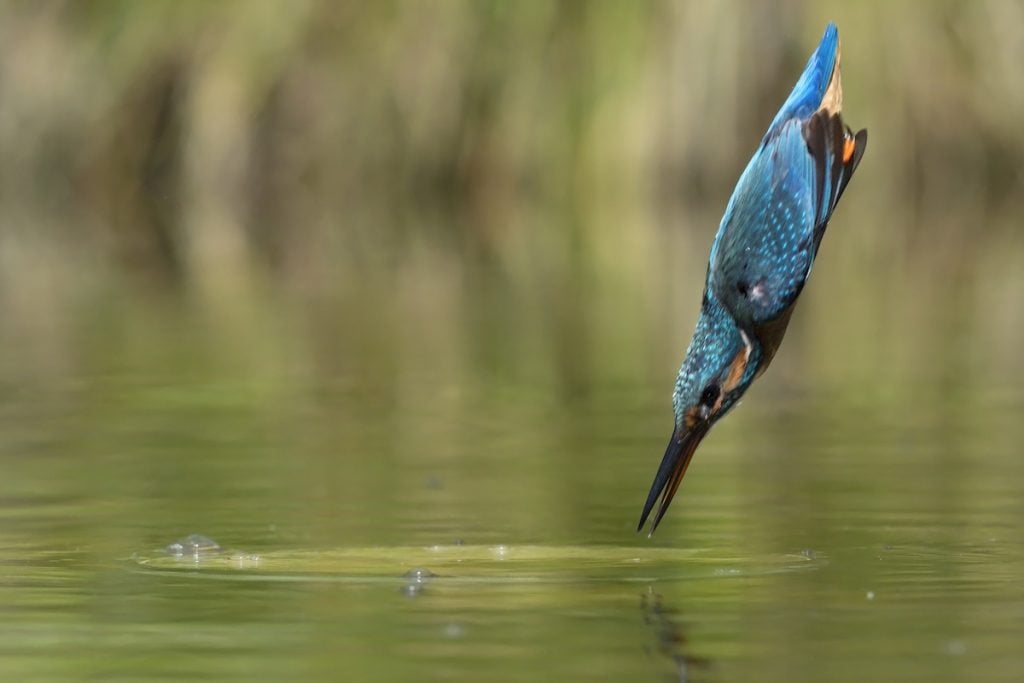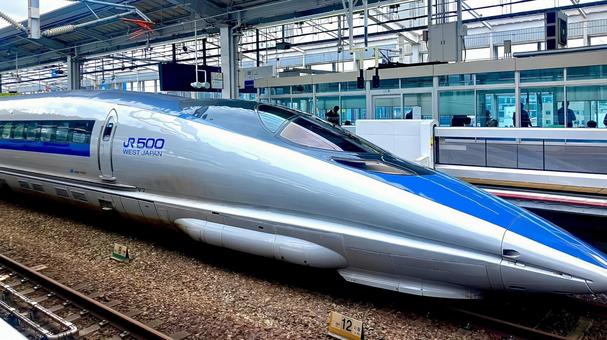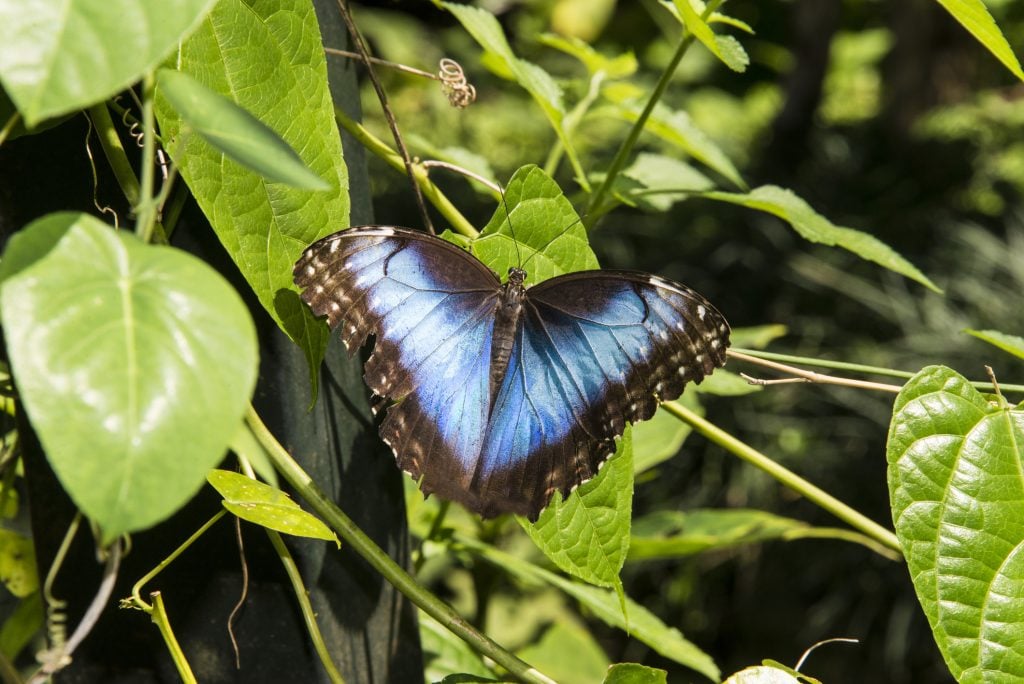For many years, humans have looked to nature for inspiration. Many of our ingenious solutions come from natural evolution in the animal kingdom, which has surpassed our meek engineering attempts. It’s known as biomimicry, and it’s when we borrow nature’s design and process ideas to solve complex issues of our own. Here is how animals provided the blueprint for technology that has transformed a variety of industries.
1. Bird Beaks That Inspired a Train
Japan’s 500 Series Shinkansen bullet train faced one major issue: when it exited tunnels at high speed, it caused an air pressure wave that created a loud “sonic boom,” disturbing nearby residents. To solve this without sacrificing speed or efficiency, engineers looked to kingfisher birds, which dive into water without creating a splash. The reason lies in their long, streamlined beak that cuts cleanly through air and water. By redesigning the train’s nose to mimic a kingfisher’s beak, engineers successfully reduced tunnel exit noise while improving aerodynamics.


2. The Future of Grip Is Defined by Gecko Feet
Geckos have setae—microscopic hairs on their feet—that branch into even smaller structures called spatulae, creating immense friction and dry adhesion that allows them to climb walls and ceilings. These structures can easily disengage when geckos adjust the angle of their feet. Today, scientists have recreated this mechanism to produce dry adhesive materials used in robotics, medical devices, and climbing robots, proving that geckos truly redefined the science of grip.
3. Shark Skin Has Inspired Bacterial Shields
Sharkskin is naturally resistant to bacteria and microorganisms thanks to its microscopic ridges known as denticles. These prevent bacteria from attaching and forming colonies. Researchers replicated this pattern in materials like Sharklet, an antimicrobial surface used in medical tools, hospital touchpads, and door handles. This technology offers chemical-free bacterial protection, all inspired by sharks’ built-in defense system.
4. Whale Flippers Rewired Wind Power
Despite their massive size, humpback whales are agile swimmers that can make sharp turns to catch prey. Their secret lies in the tubercles—large bumps along the leading edge of their flippers—that increase hydrodynamic efficiency. Engineers adapted this design to create wind turbine blades with similar bumps, enhancing energy generation, particularly at low wind speeds.
5. Termites Inspired Technology for Buildings That Cool Themselves
Termite mounds function like natural air conditioners, maintaining stable temperatures inside despite harsh outdoor heat. Their intricate system of vents and air channels keeps air circulating and humidity balanced. Inspired by this, architects designed energy-efficient buildings with natural climate control systems. A notable example is the Eastgate Centre in Zimbabwe, which uses passive cooling to circulate air—drawing in cool air at night and pushing out hot air by day—saving massive amounts of energy.
6. The Lotus Flower Inspired Waterproofing
The lotus flower stays pristine even in muddy waters thanks to its waxy, hydrophobic surface, which makes water bead up and roll away, carrying dirt and bacteria with it. This phenomenon, called the “lotus effect,” has inspired innovations such as self-cleaning paints, waterproof fabrics, and stain-resistant coatings, reducing the need for harsh cleaning chemicals while promoting sustainability.
7. Mussel Attachment Technique Inspired Adhesives
Mussels can firmly attach themselves to rough, wet underwater surfaces—something ordinary glue can’t achieve. Researchers mimicked this natural adhesion to develop mussel-inspired, biocompatible glues used in medicine and marine engineering. These adhesives can seal wet tissues, repair bones, and fix medical implants, revolutionizing both healthcare and underwater construction.
8. Butterfly Wings Changed the Future of Dye
The Morpho butterfly’s brilliant blue hue isn’t from pigment but from structural coloration—tiny nanostructures on its wings manipulate light, reflecting blue wavelengths while canceling others. This has inspired pigment-free color technologies for anti-counterfeiting, reflective displays, and permanent vivid dyes, offering eco-friendly alternatives to traditional pigments.

9. Octopus Arms Inspired Robotics
An octopus can grasp, sense, and manipulate with remarkable precision using its eight arms covered in suction cups. Each sucker acts as an independent unit with muscles that create suction and chemoreceptors that let the octopus “taste” what it touches. Engineers have used this as a model for soft robotic hands that can handle delicate objects or operate underwater—innovations now used in surgery, manufacturing, and underwater exploration.
10. Chameleon and Salamander Tongues Inspired a New Slingshot Mechanism in Tools
Chameleons and salamanders have tongues that function like slingshots, launching at incredible speeds to catch prey. Their muscles store elastic energy around a tapered bone and release it instantly, propelling the tongue up to five meters. Inspired by this, engineers have developed high-speed robotic and medical devices—from tools that could one day clear blood clots to robotic systems that capture debris in space or rescue items in collapsed structures.
Nature’s designs are more than just inspiration — they’re the foundation of innovation that continues to shape the world around us.
